Kiwi can do.
In real Kiwi fashion, we recycle a lot of the campus’s excess materials to build what we do on the farm https://letskona.com.


LETS
We are a part of the Campus Department commonly called The Farm.
The Farm encompasses Aquaponics, Natural Farming, Animal Husbandry, Permaculture, and IMO.
We hold training seminars for YWAM and the local community.
This April 2023, we had our school running again with nine students, Stewardship and Sustainability. This school tends to run every April.

Permaculture
Permaculture seeks to integrate the environment and plants and people into a forest of food.
Our Permaculture has a range of edible plants, fruit trees, and at times even bee hives.

Aquaponics
Aquaponics was what really got us interested in coming to Kona. We had been trialing Aquaponics, using fish to grow vegetables, in the Wairarapa.
We produce between 30 to 50 kilos of vegetables a week from our grow beds, and most of it ends up in our cafeteria for us to eat.
We run both raft and gravel systems to grow.
Fun fact, aquaponics uses about 10% of the water for the same growing capacity as a soil garden.

Natural Farming
Natural Farming, Regenerative Farming, and non-Tillage Farming. What we practice comes under a number of different names, and incorporates the same general ideas.
Healthy soil equals healthy plants, and healthy soil needs a lot of biomatter, bacteria, and fungi.
We constantly play with ideas to get the most out of our soil, Christine makes sure all the results end up in the cloud so that we can track the results of our experiments.

IMO/Compost
Indigenous Micro-Organisms and making our own soil. This really is the secret sauce of what we do.
Living on the dies of a volcano does mean our rocky ground has very little dirt, let alone soil. So we get all the green and brown waste from the Campus, grass clipping, tree limbs, and coffee ground (not food, that goes to the pigs).
We layer this into a cubic meter pile, with some soils between layers, lots of water, and a good dosing of Lactic Acid Bacilli, which we make. Then with the help of our workers: cockroaches, millipedes, centipedes (yuck), Beatles, and rolly pollies, our pile of rubbish soon becomes compost.
We fortify this compost with IMO, and with one part compust one part sand, and one part clay we make our own soil.
There is more to this than meats the eye, so for a more indepth review have a look at this.

Pigs/Chickens
Our chickens and some of our pigs live on an IMO rich deep litter bed.
For the pigs this is a meter of bio-mass that has been in use continuously since we arrived, so for seven years, the pig area has not been cleaned once.
We spray the litter with LAB (Lactic Acid Bacilli), the waste from the pigs falls to the ground and the bacteria eat it all up. If we have to we might bury some of the waste under a shovel full of litter. The litter is a biologically active environment, so we have constantly keep adding more bio-matter to it, be it the elephant grass that can grow as high as you, tree limbs, or fortified mulch.
The same for the chickens. Sun is kept off this litter as it would kill our good bacteria. The chickens also live on a layer of this litter and it too has never been changed, just added to.
And both are smell free.
